Cuba’s Workers After the Revolution
(Part two of six excerpts from “Cuba Since the Revolution of 1959” )
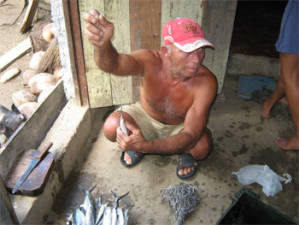
HAVANA TIMES, Dec 7 — The general strike that took place immediately after Batista fled the country in the early hours of January 1, 1959, was not a class but a national action called by Fidel Castro and the 26th of July Movement. Practically the whole population supported the strike, including the Cuban bourgeoisie and the middle classes, which were still enjoying their “honeymoon” with the revolutionary leaders.
The January 1959 strike was the rebels’ insurance policy against any possible coup aimed at preventing them from achieving a total victory. The strike became a national holiday when for a whole week tens of thousands of people lined up to greet Castro and the rebel army in their slow procession from the east of the island toward Havana.
Soon after, a huge wave of labor conflicts and strikes erupted throughout the country, expressing the pent-up economic and political frustrations of the Cuban working class during the Batista years, as well as the great expectations aroused by the revolution.
Among many labor conflicts, there were work stoppages in twenty-one sugar mills due to wage demands. Unemployed railway workers and workers who had lost their jobs at a closed paper mill near Havana went on a hunger strike. Employees of the Compañía Cubana de Electricidad, the US-owned national electrical utility, declared a slowdown to demand a 20 percent increase in wages, and six hundred workers who had been dismissed by the company in the previous two years demonstrated at the Presidential Palace to demand their reinstatement.7
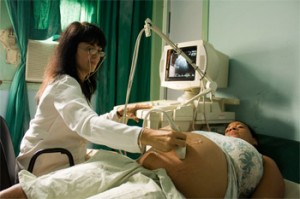
Fidel Castro and the revolutionary government tried to solve the myriad labor problems that confronted them during this early period with a clear and strong tilt in favor of the workers. Measures such as substantial reduction in urban rents decreed in March 1959 contributed to the development of the distributive radicalism that characterized the early period of the revolution.
Castro, like any other intelligent observer, must have been aware that such radicalism was the keystone for growing mass support for the revolutionary government. On various occasions, as I indicated in chapter 1, he expressed his concern with the type of consciousness prevailing among the working class. Perhaps anticipating rougher times ahead, Castro tried to “educate” the masses to trust and rely on the regime rather than simply supporting a government that was delivering the goods.
Castro’s government, very much afraid of losing control of the working class, let alone afraid of economic instability, tried to discourage strikes. The government convinced the new revolutionary union movement led by David Salvador, a former Communist who had become a 26th of July Movement leader in the clandestine struggle against Batista, to go along with its efforts in this direction.
For their part, the Communists still had an arms-length relationship with the government and tried to push it in a more radical direction. While the PSP voluntarily avoided calling for or encouraging strikes even in the earliest days of the revolution, the party took the position that “strikes, when they are necessary and just, help rather than harm the Revolution.”8
The friction between Fidel Castro and the PSP increased when several Communists reportedly encouraged a few instances of “spontaneous” land seizures. In response, Castro made clear in a televised interview on February 19, 1959, that any persons involved in seizing land without waiting for the Agrarian Reform Law would be engaging in criminal conduct and lose their right to any benefits from the law.9 Three days later the Communists retreated and agreed “that it was necessary to put a stop to the anarchic seizures of land.”10
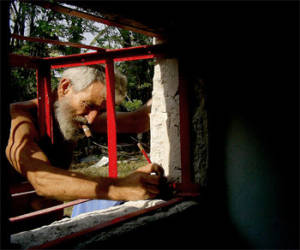
Shortly after Batista fled the country, union halls throughout the island were occupied by revolutionary trade unionists of various stripes, with those associated with the 26th of July Movement most numerous and influential. These new leaders quickly proceeded to purge all the supporters of Eusebio Mujal—the “Mujalista” labor bureaucrats who had collaborated with the Batista dictatorship.
A vigorous organizing campaign was quickly launched that greatly enlarged the already sizable, although bureaucratic and corrupt, union movement. In the spring, every single local union in the country held elections, and these were followed by elections at the regional and national level. This turned out to be the most important exercise in autonomous grassroots democracy during the revolutionary period.
The candidates associated with the 26th of July Movement emerged as the overwhelming winners, and the Communists managed to obtain only some 10 percent of the union posts (some of the elected 26th of July Movement candidates did have Communist sympathies). In any case, the outcomes of the spring union elections were remarkably consistent with the results of the union survey the PSP had conducted in 1956.
The election results prodded the Communists into putting a great deal of effort to increasing their influence in the organized working class, which, as one might expect, provoked a great deal of conflict with their political opponents inside the unions. Nevertheless, the elections of delegates in early November for the Tenth Congress of the CTC (Confederación de Trabajadores de Cuba, Confederation of Cuban Workers) that was to take place later that month produced results very similar to those of the spring elections.
Once the congress began, it was clear that the Communist delegation would take a drubbing and would be excluded from the leadership bodies of the labor confederation. At this point, Fidel Castro intervened and a different leadership slate was approved. While well-known Communist unionists were kept off the slate, the so-called unitarian elements of the 26th of July Movement, who were friendly to the Communists and were led by Jesús Soto were given a predominant and controlling role.

After the congress concluded, the Labor Ministry, under Fidel Castro’s control, assisted by the Communist union leaders and the “unitarian” elements friendly to them, began to purge a large number of trade union leaders who had resisted Communist influence, accusing them of being “Mujalistas.”11 The purge took place by means of purge commissions and carefully staged and controlled union meetings instead of new elections.
About 50 percent of the labor leaders, most of whom belonged to the 26th of July Movement and had been freely elected in the spring 1959 local and national union elections, were removed; many were persecuted and jailed as well.
Veteran PSP cadres and their “unitarian” collaborators took over those leadership positions. Castro and his revolutionary government enjoyed such great support in 1959 and 1960 that any labor leader they chose could have easily been removed from office had there been new elections; any slate of candidates supported by Castro and his government would undoubtedly have won.12
However, from the Cuban leader’s long-term perspective, new elections would have allowed the unions to retain their autonomy. The purges allowed the unions to be turned into his policy tools at a point when he had begun to move politically toward the Soviet Union and the Cuban Communists.
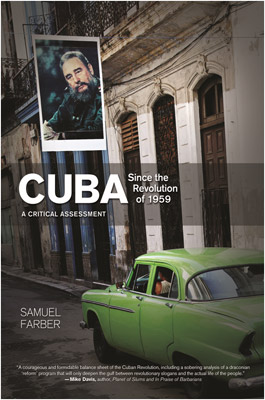 In August 1961, less than two years after the fateful Tenth Congress of the CTC, the government approved new legislation that brought the nature and function of Cuban trade unions into alignment with those of the Soviet bloc. According to the new law, the main objectives of the unions were to help in the attainment of the national production and development plans; to promote efficiency and expansion of social and public services; to improve the administration of all sectors of the economy; and to carry out political education.13
In August 1961, less than two years after the fateful Tenth Congress of the CTC, the government approved new legislation that brought the nature and function of Cuban trade unions into alignment with those of the Soviet bloc. According to the new law, the main objectives of the unions were to help in the attainment of the national production and development plans; to promote efficiency and expansion of social and public services; to improve the administration of all sectors of the economy; and to carry out political education.13
A few years later, a CTC Declaration of Principles and Union Statutes further elaborated on the role and duties of the Cuban unions as the government’s agents to impose production discipline. The unions had to organize socialist emulation and unpaid labor; strictly apply labor legislation, work quotas, wage scales, and labor discipline; promote an increase of output; improve the quality of production; reduce costs and maintain equipment; develop political consciousness; and expand recreational, sports, and cultural facilities.14
Eventually, the unions were reorganized into fewer national unions such that all workers in a given industry, regardless of their job description, belonged to the same industrial unions. Membership in the unions was supposedly “voluntary,” a convenient fiction accepted by some foreign observers who somehow failed to notice and acknowledge the enormous coercive pressures to join the “mass organizations” of a one-party state.15
The Eleventh CTC Congress, which took place in November 1961, could not have been more different from the congress two years earlier. Unanimity had now replaced controversy. With no contest allowed for the leading positions at stake, all leaders were elected by acclamation. Not surprisingly, old Stalinist leader Lázaro Peña regained the position of secretary general that he had last held in the forties under Batista.
Of the seventeen national union leaders in 1959, only five remained in the twelve-member leadership group “elected” at the conclusion of the congress. In order to save production costs, the Eleventh Congress also agreed to give up gains that many unions had won before the revolution.
It approved the eight-hour day, thereby adding work time to those union members who had already gained the seven-hour day. The nine days of sick pay, previously paid automatically, would be paid only to those who could prove that they were actually sick. The extra month’s pay as an end-of-the-year bonus was abolished.
Although an abstract case could be made for the desirability of at least some of these changes in a new socialist order, here they were imposed from above with little or no discussion. There was no open confrontation with the opposing views actually held by a large number of Cuban workers, who could not openly express them, nor organize in support of what they thought.
Undoubtedly, the benefits that the workers had otherwise obtained from the revolution along with the then-prevailing revolutionary fervor in the country greatly facilitated the government’s ability to establish its vision of the role of workers and unions under its version of socialism.
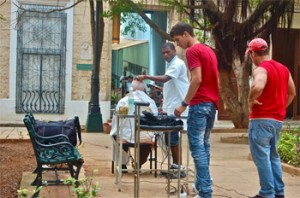
Even the dramatic change of leadership carried out at the 1961 congress did not put an end to the process of erasing all remaining traces of independent unionism. By the end of the Twelfth CTC Congress in 1966, only one of the members of the 1961 national committee remained. Of the twenty-five other heads of labor federations in 1961, only one remained in office by 1966.
After 1961, several top leaders of the CTC had been removed and others appointed by the party’s political bureau, not by the CTC itself,16 without even the slightest regard for formality and appearances. In any case, the radical change in leadership personnel within such a short period of time was a faithful reflection of the no less drastic change that had taken place in the nature and function of the Cuban unions. In fact, the revolutionary leaders were politically quite upfront about the changes that they had established in the unions.
Vice Premier Raúl Castro declared that “yesterday it was necessary [for unions] to struggle continuously in order to gain certain advantages, to obtain a little more from the profits being made by the magnates. Today the great task confronting the CTC and the unions is to increase production, recruit voluntary workers, tighten labor discipline, push for higher productivity, and improve the quality of what is produced.”17 }

In what amounted to a veritable “educational” campaign, similar pronouncements were continually being made throughout the early sixties by “new” Communist leaders such as Fidel Castro as well as by the members of the Communist “old guard” such as Blas Roca.18
As one might expect, the character of collective bargaining itself also changed. The Ministry of Labor published a model collective-bargaining agreement in 1962 with instructions on how to implement it throughout the various sectors of the economy. This model agreement followed closely the Soviet regulations on collective bargaining published in 1947.19
Regarding the right to strike, during the first five years after the victory of the revolution in 1959, various laws were enacted to regulate labor conflicts. The Ley de Justicia Laboral (Law of Labor Justice), enacted in 1964 and put into effect at the beginning of 1965,20 did not mention strikes, following the Stalinist theory that since the workers were the owners of the means of production they could not strike against themselves.
In fact, the right to strike had been explicitly mentioned only in the regulations that were in force until 1960. In June 1961, Ernesto “Che” Guevara had put forward the notion that “the Cuban workers have to get used to living in a collectivist regime and therefore cannot strike.”21 Therefore, it was hardly surprising that the 1964 law did not mention strikes and neither did the “socialist” 1976 constitution, even though the progressive prerevolutionary constitution of 1940 had explicitly declared the constitutional standing of the right to strike in its article 71.
Indeed, the main overall purpose of the 1964 law was to strengthen labor discipline and increase productivity. The law singled out for punishment not only those workers who committed economic crimes like fraud but also those who displayed signs of laziness, vagrancy, absenteeism, tardiness, foot-dragging, or lack of respect for superiors, and who damaged equipment.
The law paired violations with three grades of punishment: light, moderate, and serious penalties. Light penalties ranged from a simple warning to a small wage cut. Moderate punishment included a major wage cut or transfer to a different job in the same work location. Serious penalties ranged from transfer to a different location, which could be far from family members, to loss of employment.22
In mid-1969, a little over ten years after the victory of the revolution, the minister of labor announced that the government was preparing regulations for the “labor file” or identity card carried by every Cuban worker. The official unions did not discuss the original draft; they were eventually given some input into how the regulations were to be administered after they became law in September 1969.
The labor file, or the “workers’ biography,” as the minister of labor called it, would include the workers’ merits, such as, for example, overfulfillment of work quotas or overtime work without pay, as well as demerits such as absenteeism, negligence in handling equipment, and nonfulfillment of work quotas. The “labor file” would also record any sanction or punishment applied to the worker by any of the relevant disciplinary bodies and courts.23
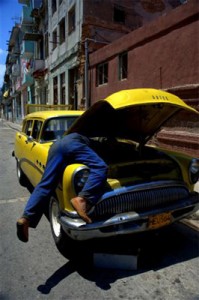
Notwithstanding all the mechanisms of control that were introduced in the sixties to make Cuban workers more productive, the government did not feel they were effective enough. For one thing, absenteeism grew throughout the late sixties and reached some 20 percent of the labor force by late 1970. On October 15, 1970, Minister of Labor Jorge Risquet, who had been politically formed in the ranks of the old Communist Party, proposed resolution number 425, which in effect was a vagrancy or antiloafing law that called for the placement of nonproductive workers in labor camps.
From the government’s point of view, this was preferable to imprisonment since the labor camps would achieve the double purpose of contributing to production and simultaneously segregating “lazy” people and preventing them from influencing other workers. Before becoming law, the proposal was presented for public discussion, supposedly to obtain the workers’ opinions but in reality to engage in a one-sided government media campaign in support of the objectives and procedures of the proposed law. The campaign succeeded in incorporating some 100,000 men into production, which was after all one of the central objectives of the proposed legislation.
Finally, on March 15, 1971, the government enacted the Law against Laziness. According to this law, all men between the ages of seventeen and sixty had to put in a full workday. Anyone who missed or left work for fifteen days or more without justification or who had been reprimanded by his work council at least twice would be classified as being in a “precriminal state of loafing,” while recurrent absentees would be charged with the “crime of loafing.”
Sanctions ranged from house arrest to internment in a rehabilitation center doing forced labor for a period ranging from one to two years. The law also lengthened the incarceration period and even authorized the use of capital punishment for serious crimes such as “economic sabotage.” In all cases, the courts were to consider such factors as age, the record of labor and social activities of the accused, and the personal and family factors that may have affected the behavior of the guilty party.24 We do not know the extent to which the law was implemented in practice.
At the time, it was noted that the law against absenteeism and “loafers” had actually been in the works for a considerable amount of time before it was proposed in late 1970 and enacted into law in the spring of 1971. The preamble to the law had actually been written as early as 1968, but the law had not been decreed then because government leaders thought that certain prerequisites had to be fulfilled before it could be effectively implemented.
According to the Cuban minister of labor, these prerequisites included (1) the total eradication of the private sector, excepting small farms, making it impossible to hide the person’s employment status, (2) creation of personnel records for every worker, which were inaugurated in 1969, and (3) a census of the population in order to have exact information on manpower by region, zone, and street block.25
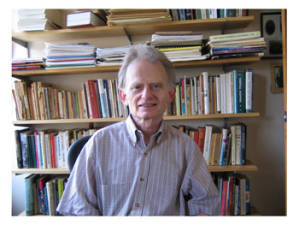
Footnotes:
7. Hugh Thomas, Cuba: The Pursuit of Freedom (New York: Harper and Row, 1971), 1196.
8. Blas Roca, “Huelgas o ‘no huelgas,’” Hoy, 10 febrero 1959, 1.
9. Fidel Castro, Discursos para la historia (Havana: Imprenta Emilio Gall, 1959), 1:137.
10. “Declaraciones del PSP: El PSP pide a los campesinos que impidan pro si mismo las ocupaciones de tierras; Considera innecesaria y peligrosa la Ley 87,” Hoy, 22 febrero 1959, 1.
11. If such a claim had been correct, Mujal would have been shown to have far greater support in the union movement than the government’s supporters had ever given him credit for! Regrettably, some social scientists studying Cuba have accepted the Cuban government’s claims at face value. See, for example, Linda Fuller, Work and Democracy in Socialist Cuba (Philadelphia: Temple University Press, 1992), 47–56.
12. Marifeli Pérez-Stable, The Cuban Revolution: Origins, Course and Legacy, 2nd ed. (New York: Oxford University Press, 1999), 72–73.
13. Law 962, August 1, 1961, in Gaceta Oficial (special edition), August 3, 1961, cited in Roberto E. Hernández and Carmelo Mesa-Lago, “Labor Organization and Wages,” in Revolutionary Change in Cuba, ed. Carmelo Mesa-Lago, (Pittsburgh: University of Pittsburgh Press, 1971), 212.
14. “Declaración de principios y estatutos de la CTC,” El Mundo, July 6, 1966, cited in Hernández and Mesa-Lago in “Labor Organization and Wages,” 212.
15. A good example of this kind of inability to understand the reality of Cuban labor is to be found again in Fuller, Work and Democracy in Socialist Cuba, 43–44.
16. Domínguez, Cuba: Order and Revolution, 271–72.
17. Raúl Castro, Revolución, January 23, 1963, cited in Hernández and Mesa-Lago, “Labor Organization and Wages,” 212–13.
18. Fidel Castro, “Los buenos y los malos dirigentes obreros,” speech of June 15, 1960, reproduced in Diario Granma, 10 junio 2010, www.granma.co.cu/2010/06/10/nacional/
artic03.html; Blas Roca, “El nuevo papel de los sindicatos bajo el socialismo,” Hoy, 28 febrero 1962, reproduced in Granma, 16 junio 2010, 3; and Blas Roca, “La disciplina en el trabajo,” published as “Aclaraciones de Blas Roca,” Hoy, 1 julio 2010, reproduced in Granma, 1 julio 2010, 3.
19. Hernández and Mesa-Lago, “Labor Organization and Wages,” 218–19.
20. Law 1166, September 23, 1964, in Gaceta Oficial, October 3, 1964, cited in Hernández and Mesa-Lago, “Labor Organization and Wages,” 219–20.
21. Ernesto “Che” Guevara, Revolución, June 27, 1961, cited in Hernández and Mesa-Lago, “Labor Organization and Wages,” 220.
22. Bunck, Fidel Castro and the Quest for a Revolutionary Culture, 136–37.
23. Hernández and Mesa-Lago, “Labor Organization and Wages,” 237–38.
24. Bunck, Fidel Castro and the Quest for a Revolutionary Culture, 158–59; Mesa-Lago, Cuba in the 1970s, 95.
25. Maxine Valdes and Nelson P. Valdes, “Cuban Workers and the Revolution,” New Politics 8, no. 4 (Fall 1970): 44. The Valdeses in turn drew from information that appeared in Granma on September 10, 1970.
CUBA SINCE THE REVOLUTION OF 1959
A Critical Assessment
Copyright Samuel Farber 2011.
(www.haymarketbooks.org)






so you think capitalism is working much better? Millions of Americans are homeless and dying of hunger because they can’t get jobs while a handful of people are so rich that they don’t know what to do with their money. Capitalism is a system based on selfishness and greed.
You are wrong, Julio.
There ARE motivations other than money for one to work – see the open software movement for example, people work because it is necessary and for the joy of seeing people using the fruits of your labour.
By far it’s the class of Cuban workers or proletarians the one that has suffered the most under the dictatorship of Fidel Castro, both in terms of political power and of income. The Cuban revolution was not a worker’s revolution. It was a movement to topple a dictator -Fulgencio Batista. Such movement included people from different classes, the majority with revolutionary and progressive ideas, a constant feature of Cuban politics in the first half of the twentieth century: everybody wanted to be a revolutionary. The politiqueros of the Cuban communist party -the PSP- joined the struggle late, with Carlos Rafael Rodriguez visiting Sierra Maestra in 1958 as an opportunist -that is, portraying the typical posture of the communists in Cuban politics from 1933 to 1959. In essence Fidel did exactly the same Batista had done in the late 30s, with only one difference: while the Batista-communist alliance helped the working class, the Fidel-communist alliance suffocated it, while helping Fidel face the challenge of the United States with the support of the Soviet Union. Today the average salary in Cuba is around 20 dollars per month, less than what it was in 1958. If we take into account inflation and buying-power, the average salary in Cuba is lower today than in 1940. In the meantime, the CTC, the only legal union, represents the interests of the government -the owner of the means of production and main employer. A complete disaster.
What we see now in Cuba is a practical demonstration why communism and socialism do not work in practice. This is good reading for all left leaning readers. If there is no incentive to work the people simply will not work out of consciousness or anything other than real need. You can see now speeches with Raul Castro and others asking for more productivity and more efficiency and to work harder etc and I can tell you that it does not matter how much they ask and beg the people to work and work harder it will not happen. No in that way.People will only work when they are paid and when the money they are paid with have real value. That does give real meaning to work. Cubans now are barely paid and the cuban peso currency used to paid them is worthless. If they need something they have to exchange the currency into another the CUC so that they can purchase first necessity items. Notice that this end result is nothing else but the consequence of all they have done thru the years. Work had no meaning in the society they created because money had no meaning too. At least Cuban pesos.
This is not a problem intrinsic to Cuba or to any country in particular. The main premises of Communism and Socialism are unworkable from the economic view point.
That is why communism will never be.
Rob, the bigest problem Cubans have nowadays is fear. They are very afraid. They have been condition to have this fear by the state security of the system. Fear is the main mechanism used to control many with few.
this article reads like a slow motion car crash. step by step the indepence of the workers was suffocated and stunted, with the working class left with no reason for individual initiative and no ability to let their own creativity flourish. i remember reading about how in the early days of the revolution che and fidel wanted to replace material incentives with moral incentives, leading to a situation where the working class got neither moral or material incentives, their only motivation to work hard and produce was to avoid being sent to a labour camp. no wonder the cuban economy has always been stagnant and has had to rely on outside solidarity. the cuban economy needs an injection of creativity, which could be provided by an autonomous working class, and i dont understand why the cuban workers and intellectuals dont demand this more aggressively.. they’ve nothing to lose but their chains:-)